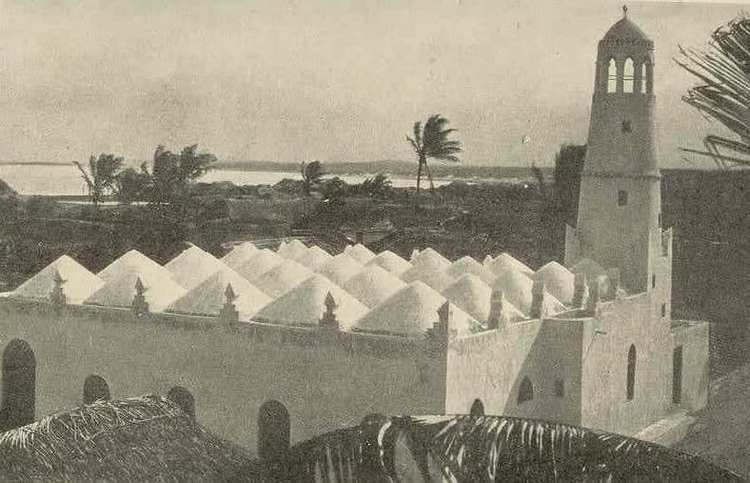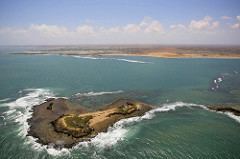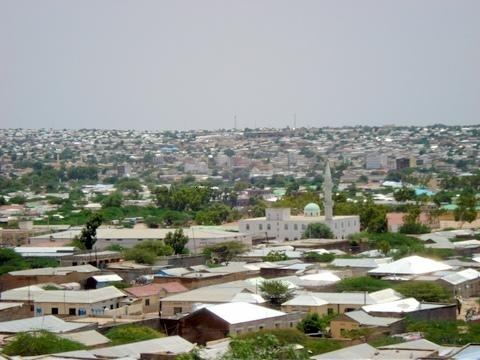Country SomaliaJubaland Region Population 183,300 | University Kismayo University District Kismayo | |
 | ||
Map of Kismayo
Kismayo (Somali: Kismaayo; Arabic: كيسمايو, Kīsmāyū; Italian: Chisimaio) is a port city in the southern Lower Juba (Jubbada Hoose) province of Somalia. It is the commercial capital of the autonomous Jubaland region.
Contents
- Map of Kismayo
- Welcome to somalia lido beach kismayo
- Kismayo streets short film kismayo somalia hd
- Middle Ages and the early modern period
- Colonial era
- Somali Civil War
- Location
- Climate
- Government
- Districts
- Demographics
- Education
- Economy
- Airport
- Roads
- Seaport
- Notable residents
- References

The town is situated 528 kilometres (328 miles) southwest of Mogadishu, near the mouth of the Jubba River, where the waters empty into the Indian Ocean. According to the UNDP the city of Kismayo has a population of around 766,667 in 2005.

From 1836 until 1861, Kismayo and other parts of Jubaland were claimed by the Sultanate of Muscat (now in Oman) and the Geledi Sultanate, and were later incorporated into British East Africa. In 1925, Jubaland was ceded to Italy, forming a part of Italian Somaliland. On 1 July 1960, the region, along with the rest of Italian Somaliland and British Somaliland, became part of the independent republic of Somalia.

Kismayo was later the site of numerous battles during the civil war. In late 2006, Islamist militants gained control of most of the city. To reclaim possession of the territory, a new autonomous regional administration dubbed Azania was announced in 2010 and formalized in 2011. In September 2012, the Somali National Army and AMISOM troops re-captured the city from the Al-Shabaab insurgents. The Juba Interim Administration was subsequently officially established and recognized in 2013.
Welcome to somalia lido beach kismayo
Kismayo streets short film kismayo somalia hd
Middle Ages and the early modern period
The Kismayo area was originally a small fishing settlement.
During the Middle Ages, the region came under the rule of the influential Ajuran Sultanate, which utilized the Jubba River for its plantations.
In the latter half of the 19th century, Somali pastoralists from the Marehan Darod clan settled in Kismayo's interior. The city subsequently evolved into a major hub of the livestock trade. The Ogaden clan already inhabited Kismayo and have lived heavily around the city for centuries and the rest of Lower Jubba. In the first two decades of the 20th century, during Mohammed Abdullah Hassan's ("Mad Mullah") Dervish resistance, members of the Dhulbahante Harti sub-clan followed suit.
Colonial era
On 7 November 1890, Zanzibar became a British protectorate, and on 1 July 1895, the Sultanate ceded all of its coastal possessions in continental East Africa to Britain. Together with the Zanzibar Sultanate's other former possessions in the area, Jubaland became part of the British East Africa colony.
The ascendancy of the Harti merchant community crystallized under the British administration. They became the first Somali employees of the state, establishing themselves as an educated, urban professional class.
In 1925 local authorities from the Marehan Somali clans reached an agreement, with the British acting as enforcer. The signatories each had different accounts of the agreed to partition. According to the Marehan, the pact gave their Ugas Hirse control of Jubaland at large. The Marehan maintained that the agreement stipulated that the part of the city south of the Liboi-Kismayo road would remain under British Inforcers control, while the Marehan, and its Iisse subdivision in particular, would administer the area to the north of this. The pact also allowed the Isse access to the port.
The territory was subsequently ceded to Italy, purportedly as a reward for the Italians having joined the Allies in World War I, and had a brief existence as the Italian colony of 'Trans-Juba (Oltre Giuba). The Italians subsequently referred to the city as Chisimaio. Kismayo and the northern half of the Jubaland region were then incorporated into neighboring Italian Somaliland on 30 June 1926. The colony had a total area of 87,000 km² (33,000 sq mi), with a population of 120,000 inhabitants. Britain retained control of the southern half of the partitioned Jubaland territory, which was later called the Northern Frontier District (NFD).
Under Italian administration, the Harti retained their position as the professional elite. After independence in 1960 and the establishment of a civilian administration, the 1968 parliamentary elections saw Harti MPs win all four of the seats earmarked for Kismayo.
Somali Civil War
Following the breakdown of central authority that accompanied the civil war in 1991, various local militias fought for control of the city, including supporters of Mohammed Said Hersi ("General Morgan") and Col. Omar Jess' Somali Patriotic Movement (SPM). In March 1993, a United States Marine amphibious group arrived in the city in an attempt to keep the peace as part of the United Nations intervention in Somalia. By December 1993, General Morgan's troops controlled Kismayo, despite the presence of peacekeepers. The last UN troops left the city in December 1994.
General Morgan briefly declared Jubaland independent on September 3, 1998. Political opponents of his subsequently united as the Allied Somali Forces (ASF), seizing control of Kismayo by June of the following year. Led by Colonel Barre Adan Shire Hiiraale, the ASF administration renamed itself the Juba Valley Alliance in 2001. On June 18 of that year, an 11-member interclan council decided to ally the JVA with the newly forming Transitional Federal Government.
In 2006 the Islamic Courts Union (ICU), an Islamist organization, assumed control of much of Jubaland and other parts of southern Somalia and promptly imposed Shari'a law. The Transitional Federal Government sought to re‑establish its authority, and, with the assistance of Ethiopian troops, African Union peacekeepers and air support by the United States, managed to drive out the rival ICU and solidify its rule.
On January 8, 2007, as the Battle of Ras Kamboni raged just south of Kismayo, the TFG relocated from its interim location in Baidoa to the nation's capital, Mogadishu. This marked the first time since the fall of the Siad Barre regime in 1991 that the federal government controlled most of the country.
Following this defeat, the Islamic Courts Union splintered into several different factions. Some of the more radical elements, including Al‑Shabaab, regrouped to continue their insurgency against the TFG and oppose the Ethiopian military's presence in Somalia. Throughout 2007 and 2008, Al‑Shabaab scored military victories, seizing control of key towns and ports in both central and southern Somalia. By January 2009, Al‑Shabaab and other militias had managed to force the Ethiopian troops to retreat, leaving behind an under-equipped African Union peacekeeping force to assist the Transitional Federal Government's troops.
In September 2012, the Somali Army and AMISOM troops re-captured the city from the Al-Shabaab insurgents during the Battle of Kismayo (2012).
Location
Kismayo is located in the fertile Juba Valley in southeastern Somalia, on the Indian Ocean coast. Nearby settlements include to the northeast Xamareyso (5.0 nm), to the north Dalxiiska (1.3 nm), to the northwest Qeyla Dheere (6.4 nm), to the west Saamogia (0.9 nm), to the southwest Iach Bulle (10.0 nm), and to the south Qandal (6.5 nm). The largest cities in the country most proximate to Kismayo are Jamaame (52 km), Jilib (97 km), and Merca (337 km).
Climate
Kismayo has a Tropical monsoon climate (Köppen climate classification). Weather is hot year-round, with seasonal monsoon winds and irregular rainfall with recurring droughts. The gu rains, also known as the Southwest Monsoons, begin in April and last until July producing significant fresh water and allowing lush vegetation to grow. The gu season is followed by the xagaa (hagaa) dry season.
Government
A new municipal district administration was established on 6 September 2008. Its members reportedly represented the ICU and Al‑Shabaab (three members each) in addition to a local clan (one member) which had played a part in the military assault. Representatives of the Islamic Courts Union questioned the legitimacy of the authority. On 1 October 2009, Al Shabaab took full control of the city, after Sheikh Ahmed Madobe, a senior commander of Ras Kamboni Brigade (then a part of Hizbul Islam), challenged Al‑Shabaab's control.
With the subsequent ouster of the Al-Shabaab rebels in September 2012, the Somali government began preparing mediations between the city's various stakeholders in order to establish an inclusive local administration. On 28 August 2013, the autonomous Jubaland administration signed a national reconciliation agreement in Addis Ababa with the federal government. Endorsed by the federal State Minister for the Presidency Farah Abdulkadir on behalf of President Hassan Sheikh Mohamud, the pact was brokered by the Foreign Ministry of Ethiopia and came after protracted bilateral talks.
Under the terms of the agreement, Jubaland is administered for a two-year period by a Juba Interim Administration and led by the region's incumbent president, Ahmed Mohamed Islam. The regional president serves as the chairperson of a new Executive Council, to which he appoints three deputies. Additionally, the agreement includes the integration of Jubaland's military forces under the central command of the Somali National Army (SNA), and stipulates that the Juba Interim Administration will command the regional police.
Districts
Kismayo is divided into five districts or degmo (see map):
°Gulwade recently added after central government collapsed. by ahmed sahal (haji libah)
Demographics
Kismayo is inhabited by a diverse group of Somalis. the city has a population of around 166,667 in 2005. The largest clans dominating the city are mainly the Marehan and Ogaden clans. There are also many Harti settlements. Following a greatly improved security situation in the city in 2012, many Somali refugees began returning to Kismayo.
Education
Kismayo is home to a large population, which is served by a number of local high schools, skills training centers and tertiary institutions.
The Guulwade primary and secondary School which is biggest and most famous. The Gamal Abdel Nasser School lies further south, in the Alanley district, near the Governor's Quarters and the Indian Cemetery.
Institutions of higher learning in the city include Kismayo University (KU). Established in August 2005, it is situated about 1 km north, along the Kismayo–Mogadishu main road.
jubba university of Somalia was started as small institute named ibn-sina institute of science studies on 5 February 2009 which become the first private institute that provide one year associate with higher diploma for science subjects. During the first year, the institute offered two years diploma in nursing which become at the same time the first higher institute that provide nursing in the region. In 7 August 2010, the institute took the name (JUBBA UNIVERSITYOF SOMALIA), and opened the faculty of health science
Economy
Kismayo is the market center and commercial hub autonomous jubbaland region. Bank with a presence in Kismayo include salama bank and other many money remittance business.
In October 2008, the daily labor rate was estimated at 157,500 Somali shillings (approximately $4.50), up from 52,000 shillings (approximately $2.21) in January 2008, while kilogram of red rice rose from 14,170 (approximately $0.61) to 46,000 (approximately $1.31). A liter of diesel cost 43,000 shillings (approximately $1.23) and a camel costs over 15 million shillings (approximately $435). Total cereal production as of 2008 was estimated to be 780MT.
Before the war, there were a meat-tinning factory, as well as a tannery, and a modern fish factory. There were also two sugar refineries, one at Jowhar and another situated near Jilib. As of January 2007, the market was bustling, although the city's infrastructure had incurred considerable damage.
Airport
Kismayo's air transportation needs are served by Kismayo Airport, which is situated about 10 km from the city. It was formerly a Somali Air Force training base. Following the outbreak of the civil war, the airport was closed down for a period of time and its infrastructure was significantly damaged. However, the facility was reopened in October 2008 by the Islamic Courts Union after undergoing some renovations. That same year, the airport was also renamed after Imam Ahmed Gurey, a 16th‑century Somali military leader.
The Kismayo Airport was officially brought under the Juba Interim Administration in August 2013. Per agreement, management of the facility was scheduled to be transferred to the Federal Government after a period of six months. Revenues and resources generated from the airport will also be earmarked for Jubaland's service delivery and security sectors as well as local institutional development.
Roads
Three main thoroughfares connect Kismayo to other major areas in the country. The 600 km Highway 3 runs the length of the Juba Valley. Starting in Beled Hawo, it goes through Garbaharey, Bardera and Buale before finally reaching Kismayo.
A paved 528 km freeway links the capital Mogadishu with Kismayo. A third highway extends northwest from Kismayo to Afmadow, then turns toward Dhobley in the eastern part of the Gedo region.
In January 2015, the Interim Juba Administration launched a transport beautification and cleaning campaign in Kismayo. Part of a broader urbanization drive, the initiative includes the clearing of clogged streets and lanes, razing of illegal buildings therein, and further development of the municipal road network.
Seaport
Kismayo's large docks are situated on a peninsula on the Indian Ocean coast. Formerly one of the Bajuni Islands, the peninsula was subsequently connected by a narrow causeway when the modern Port of Kismayo was built in 1964 with U.S. assistance. The port served as a base for the Somali Navy as well as the Soviet Navy after the military coup in Somalia in 1969. Somalia and the United States jointly refurbished the port in 1984 after significant wear to the 2,070-foot-long (630 m) four-berth, marginal wharf at the harbor required major renovations to maintain operations.
The Port of Kismayo was officially brought under the Juba Interim Administration in August 2013. Per agreement, management of the facility was scheduled to be transferred to the Somali Federal Government after a period of six months. Revenues and resources generated from the seaport will, like the Kismayo airport, be earmarked for Jubaland's service delivery and security sectors as well as local institutional development.
